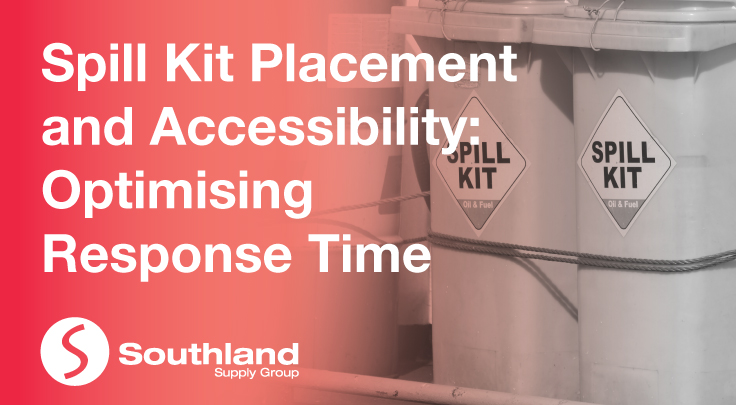
If your business deals with any kind of hazardous material, then you know the importance of having a spill kit in the workplace. When it comes to dealing with spills in the workplace or any other environment, a quick and effective response is crucial. Spills often happen unexpectedly and pose various hazards, from chemical leaks to oil spills. Having a well-thought-out spill response plan is essential, and a significant part of that plan is the proper placement and accessibility of spill kits.
STEPS TO KNOW WHERE YOU SHOULD STORE A SPILL KIT
1. Perform a Site Assessment
Performing a site assessment is crucial to identify your spill risk areas, therefore, indicating the locations for a spill kit to be close and accessible. These can then be graphed on a matrix by severity and likelihood. Make sure to identify where the risk areas are, the types of risks and the quantities of liquids in those areas. Walk around your site and remain observant for fuel, oil, chemical storage areas, loading and unloading areas and places with high vehicle movement.
You can also review the types of spills that have occurred in the past, as well as their locations. It can be a good idea to ask employees for their opinion on the high-risk spill areas, as they may have experience with spills in the workplace. Mark these locations on a floor plan for a visual representation of the spill risk areas.
2. Determine the Number and Size of Spill Kits
The size and quantity of spill kits you need depend on the size of your workplace, the potential spill volume, and the types of substances handled. A comprehensive risk assessment will help you determine the appropriate number and size of spill kits required. One of the most common types of spill kits are chemical spill kits and oil spill kits.
It is generally recommended to have multiple spill kits strategically placed throughout the facility to minimise response time. It is important to consider factors such as the distance from the potential spill areas and the number of personnel available to respond.
3. Strategic Spill Kit Placement
To optimise response time, spill kits should be strategically placed in easily accessible locations. Here are some key guidelines for placement:
a. Proximity to potential spill areas: Ensure spill kits are as close as possible to areas with a higher risk of spills. This reduces the time taken to reach the kit and begin the cleanup process.
b. Clear and visible signage: Clearly label the locations of spill kits with prominent and easily readable spill kit signage. This helps personnel locate the kits quickly, especially during high-stress situations.
c. Obstruction-free access: Ensure that spill kits are easily accessible and not obstructed by equipment, furniture, or other objects. In an emergency, every second counts, and easy access can make a significant difference.
Spill kit placement is only one part of the equation; proper training and awareness among employees are equally important. Conduct regular training sessions to familiarise personnel with the location and usage of spill kits. Furthermore, ensure that new employees are adequately trained and informed about spill response procedures.
Optimising response time during spills is crucial for minimising potential hazards and environmental impact. Proper placement and accessibility of spill kits play a vital role in achieving this goal. By identifying potential risk areas, strategically placing spill kits, ensuring easy accessibility, and conducting regular training and maintenance, businesses can enhance their spill response capabilities.
For a complete range of spill kits designed for various spills, visit Southland at https://www.southland.com.au/



